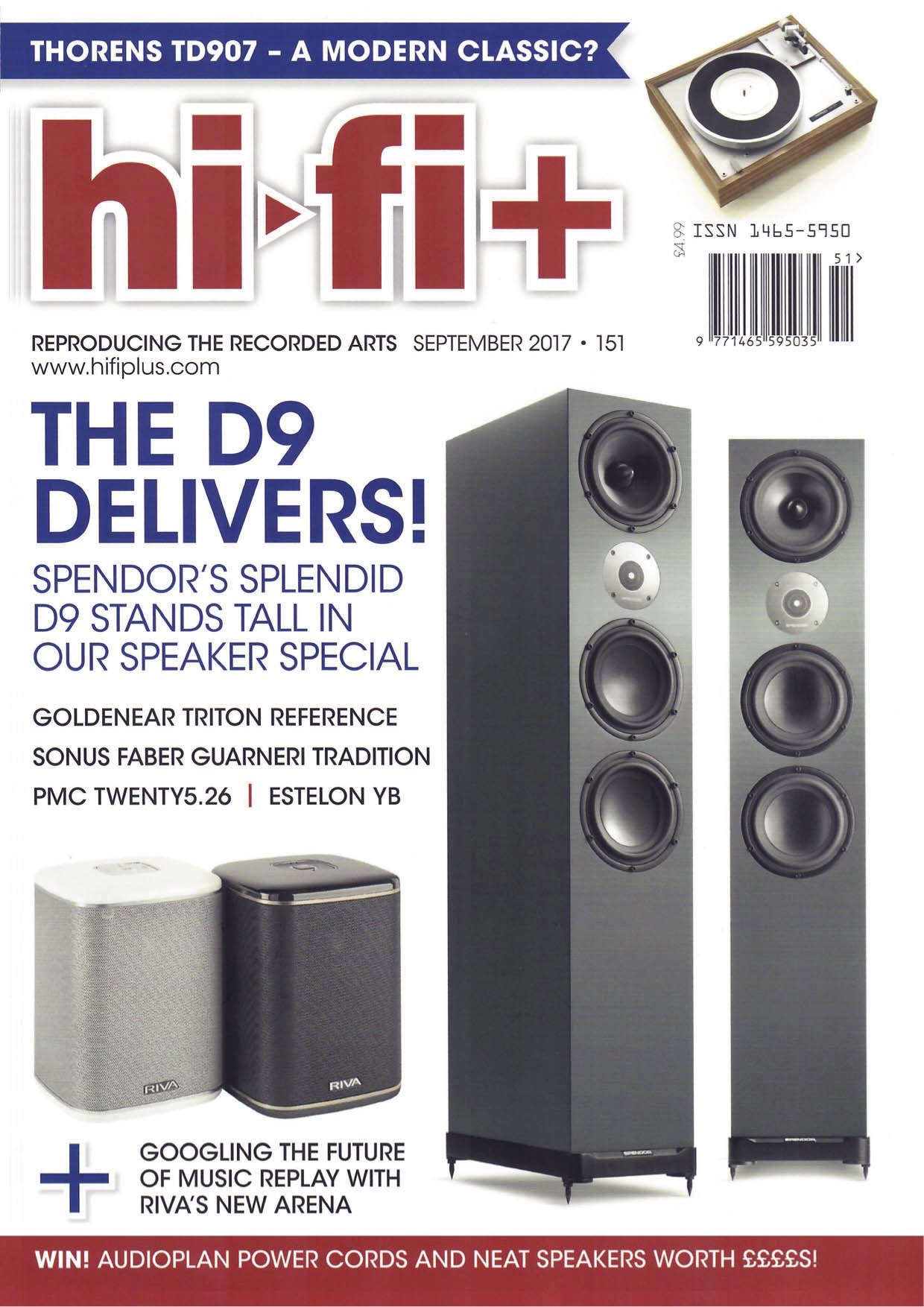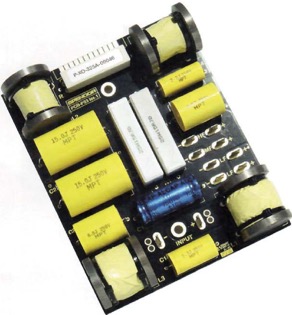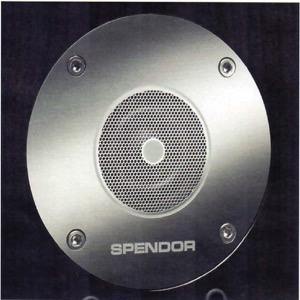
 Spendor may be one of the oldest (and most respected) names in the UK audio industry, but since its acquisition by Philip Swift (once of Audiolab) its products have been anything but old-fashioned. Admittedly, the Classic Series products look the ‘pipe and slippers’ part -all nostalgic finishes and appearance – but even here, beneath the skin these venerable designs have benefitted from carefully considered upgrades and technological improvements – developments that have filtered down directly from the unmistakably modern A- and D-Line products, whose slim cabinets are themselves anything but The-too’ versions of modern thinking, You don’t have to look too far before you find the evidence that Spender may build on the solid foundations that made speakers like the BC1 world famous, but it is only too ready to invest in modern technology and investigate practical solutions to modern concerns, The A6R, a slim, floorstanding two-way that looks remarkably conventional is anything but, at least in musical terms. Instead it manages to offer all the advantages of two-way operation in a compact enclosure that (in stark contrast to the competition) doesn’t sing along with the music. Then there’s the D1, a compact standmount of such remarkable musical coherence that it’s capable of challenging all those high-end miniatures that cost many, many times its modest price. And that’s the thing: it’s not just what these speakers do (which is impressive enough), but how they do it for the price that is the burning question, The arrival of the D9, a new flagship for the line, neatly encapsulates current thinking at Spendor, offering the opportunity to dig a little deeper into what makes these products not just perform, but exceed expectations.
Spendor may be one of the oldest (and most respected) names in the UK audio industry, but since its acquisition by Philip Swift (once of Audiolab) its products have been anything but old-fashioned. Admittedly, the Classic Series products look the ‘pipe and slippers’ part -all nostalgic finishes and appearance – but even here, beneath the skin these venerable designs have benefitted from carefully considered upgrades and technological improvements – developments that have filtered down directly from the unmistakably modern A- and D-Line products, whose slim cabinets are themselves anything but The-too’ versions of modern thinking, You don’t have to look too far before you find the evidence that Spender may build on the solid foundations that made speakers like the BC1 world famous, but it is only too ready to invest in modern technology and investigate practical solutions to modern concerns, The A6R, a slim, floorstanding two-way that looks remarkably conventional is anything but, at least in musical terms. Instead it manages to offer all the advantages of two-way operation in a compact enclosure that (in stark contrast to the competition) doesn’t sing along with the music. Then there’s the D1, a compact standmount of such remarkable musical coherence that it’s capable of challenging all those high-end miniatures that cost many, many times its modest price. And that’s the thing: it’s not just what these speakers do (which is impressive enough), but how they do it for the price that is the burning question, The arrival of the D9, a new flagship for the line, neatly encapsulates current thinking at Spendor, offering the opportunity to dig a little deeper into what makes these products not just perform, but exceed expectations.
Outwardly at least, there’s little to separate the D9 from the other tall. slim floorstanders lining the walls of your local dealer’s showroom. Narrow, deep cabinet – check: Plinth base – check: Vertical array of multiple drivers – check. But examine the detail and the differences soon start to emerge. Even a cursory glance suggests that there’s something different about the tweeter, while the plinth base barely extends beyond the cabinet footprint itself. Meanwhile a look round the back shows a complex port arrangement that’s a world away from the simple drainage pipes of yore. Look at the numbers and you’ll see that Spender suggest an in-room bandwidth that goes as low as 27Hz – not in itself unusual, but difficult to do well from a cabinet this size. Most speakers claiming that sort of extension achieve it at the expense of lumpy, uneven, and often one-note bass. Yet listen to the D9 and the first thing that strikes you is its clear and linear bass output. The bottom end of this speaker goes lower than you expect (suggesting that 27Hz figure is a lot less fanciful than some manufacturers’ numbers), but it’s also articulate, tuneful, and agile, with no overhang and no thickness to clutter and smudge the midrange.

To understand why that is, it’s necessary to dig a little deeper and take a look at the D9’s constituent elements – and what’s been done with them. The 180mm Kevlar-coned bass drivers were developed specifically for the 09, their physical and electrical characteristics tuned specifically to match the requirements of the bass enclosure. So what we have here is a bass system, in which the various parts are designed in tandem to create a coherent whole. That’s not unique, but it’s the rest of the box that makes the D9 stand out from the crowd, both in terms of what’s in it and how it sounds. The box itself is constructed from specially selected HDF, and the walls are thinner than those on much of the competition. Instead, resonance in the structure is dealt with by strategically sited low-mass resonators, small, constrained layer slabs placed at vibrational nodes to absorb energy and dissipate it as heat. The result is a cabinet structure that’s both better behaved and stores significantly less energy than conventional constructions. Add to that the lack of internal wadding and the use of Spender’s Linear Flow port technology, and you have an incredibly quiet cabinet that prevents stored energy belatedly finding its way back into the enclosed air-mass to muddy the output and limits spurious output from the port itself polluting the room.
With all that attention paid to low-frequency linearity (and it’s a lot easier to describe than it is to achieve) you might well think that Spender would want to provide the most stable footing possible – and you’d be right. So what’s with the diminutive plinth that barely extends beyond the cabinet edges? Look underneath and you’ll find that each corner of the solid plinth is supported on a substantial steel disc, 45mm in diameter. On the outer edge of each disc is the threaded hole for the M8 spike. It’s an arrangement that combines a narrower plinth with the wider footprint associated with much more obtrusive structures, a happy match of aesthetic, domestic, and mechanical requirements. The discs deliver a strong, stable, precision coupling of spike to cabinet, making for easy attitude adjustment and good energy transfer. Best of all, the mechanical stability allows the use of nice, long spikes, which allow easy adjustment in the crucial vertical dimension. The end result is both more discrete and more effective than many far more obvious (for which read ‘ugly’ or “intrusive’) arrangements.
 At the other end of the range, we find Spendor’s innovative LPZ tweeter. This soft dome, coupled-cavity driver is familiar from both the D–1 and D7, but it should still be noted just how effective and musically accomplished this apparently simple design really is. The perforated face plate acts to equalize phase and pressure across the face of the driver, producing time- and phase-coherent output, while the equivalent cavities in front of and behind the diaphragm means that the moving parts constitute a linear, balanced-mode generator: simple but effective.
At the other end of the range, we find Spendor’s innovative LPZ tweeter. This soft dome, coupled-cavity driver is familiar from both the D–1 and D7, but it should still be noted just how effective and musically accomplished this apparently simple design really is. The perforated face plate acts to equalize phase and pressure across the face of the driver, producing time- and phase-coherent output, while the equivalent cavities in front of and behind the diaphragm means that the moving parts constitute a linear, balanced-mode generator: simple but effective.
Of course, all that effort expended on the cabinet, bottom end, and high-frequencies is wasted if the midrange isn’t up to it. But then, mid-band has always been a Spender speciality and the 180mm midrange driver with its in-house EP77 polymer cone won’t disappoint. The inherent self-damping and even mechanical behaviour of the driver allows it to be used with shallow crossover slopes that lead in turn to an easy impedance characteristic — meaning that you are going to get the best out of your amp, too. Like everything else, the crossover components are carefully selected, as is the internal wiring and the single-wired terminals. And in many ways, that’s the basis of the Spendor story: there’s a clarity of vision, fastened on the rigid, low-storage cabinet and in-house drivers, but the other side of the coin is the attention to detail that’s been lavished on everything from the port to the spikes, the product’s domestic impact to its packaging. It’s a long and rocky road between an initial design and a viable end product. Look at the D9 – or any other Spendor product – and what becomes obvious is that somewhere in the factory, there’s a large sign that reads “No Short Cuts”. It’s a philosophy that becomes even more apparent once you listen to this speaker.
“The D9’s deep, linear bass is remarkably well behaved — a factor that can easily lull you into a false sense of security.”
The D9’s deep, linear bass is remarkably well behaved – a factor that can easily lull you into a false sense of security. Put it down almost anywhere and it will sound pretty good – but it won’t sound as good as it can after some time spent on optimising position and attitude. Once you’ve found the right spot, make sure that you level the speaker and then experiment with its height from the floor, using the spikes to lift or lower it. If you start with the spikes set tall and position it with them set that way, lowering the cabinet closer to the floor will bring added weight and dimensionality without any compromise of pace, pitch, or clarity. Once you’ve done that, it’s worth checking rake angle and lateral tilt, as both can have a significant impact on the music’s sense of presence and purpose.
Although their easy load characteristics mean that the D9s don’t demand supremely capable amplification, their performance certainly deserves it. Run with amps as varied as the latest TEAD Linear Bs, the VTL S400-11, or the Levinson 585, the speakers responded with enthusiasm to the character and quality of the signal they received. The astonishing clarity and innate sense of musical organisation that makes the Linear Bs so special was well to the fore, as was the S400’s presence, body, and dynamic authority. But of these options perhaps the 585 is the D9s natural partner, both in terms of cost and capability. In fact, just like the similarly priced Vienna Acoustics Liszt, these are speakers crying out to be hung on the end of today’s super integrated amps, whether that amp is the 585, the Neodio Origine A2, the Gryphon Diablo 120, or even a Lavardin IS Reference. The 09 might not match the sheer scale and bandwidth of the Liszt (even though they are virtually identical on paper) but it is a far more friendly load – which is where the little Lavardin promises to be such an interesting match.
With so many stellar new entries in the 210K speaker stakes, the 09 is going to have to carve its own niche. It does so by doing what Spendors do. Play something quick and clean, like Eleanor McEvoy’s Yoke [Moscodisc], with its crisp dynamics and surprisingly deep bass and the D9s don’t disappoint. The bottom end is deft and sure-footed, with plenty of instrumental character, rhythm, and definition, pushing things along at just the rignt pace; tight enough to be interesting without sounding hectoring or driven. Melodies and phrasing are articulate and the vocals – oh, the vocals: intimate. affecting, direct, and communicative, those vocals make this a captivating and addictive listen, one of those speakers where you set out to play a track and end up playing the whole side. Work up to larger scale works and the 09 might lack the expansive palpable acoustic space thrown by the Liszt or Wilson Sabrina, as well as the unburstably enthusiastic dynamics of the Sopra 2, but it more than makes up for those deficiencies through its sense of integration and musical integrity. Everything just slots in around that natural, expressive mid-band, underpinning voices and solo instruments with an unforced sense of musical shape and context. Did I mention the tweeter? No – that’s because you just don’t notice it, at least not as a separate entity. It’s simply a beautifully integrated extension of that open and intimate midrange. From this it might be easy to assume that the 09 is a beautifully balanced but fatally polite offering: nothing could be further from the truth. You want rude the D9 can be positively bawdy when required. It just doesn’t make an unwelcome habit of it.
Put those attributes together and what you have on the one hand is a classic British speaker, pace, rhythm, and timing all present and correct. On the other – you have a classic British speaker, tonally neutral, linear, and musically coherent. In a very real sense the 09 combines the two great traditions of UK speaker design, without diminishing either. It delivers the superbly open and communicative mid-band of a model like the D1, but succeeds in grafting on a bottom end that is as impressive as it is effective. Does that mean you can have your cake and eat it? Yes it does – and you can enjoy it with a surprisingly wide range of partnering amps too. In fact, the D9 is so system and room friendly that in many cases it might well be the best speaker you’ve ever heard, especially at the price – simply because it works more readily than the competition, With elegant lines to match its thoughtful engineering, and a range of attractive finishes, both modern and traditional, to match its room friendly bass voicing, the D9 really hits the sweet spot of attainable price, achievable performance, and acceptable domestic impact. Indeed, it’s so unmistakably English and so precisely suited to the English market that it probably needs a passport to travel. But when it arrives, I suspect it’s going to shake up more than a few of the locals. Tall, slim, and innately understated, this English gentleman might not shout, but the message is still delivered with purpose, clarity and where necessary, definite intent, A superbly balanced and beautifully judged design, this is the best Spendor yet – and that’s no mean feat.
TECHNICAL SPECIFICATIONS
Type: Three-way rear-reflex loaded loudspeaker
Driver Complement: 2x 180mm Kevlar coned LF, 1x 180mm EP77 polymer MF, 1x 22mm Spendor LPZ HF
Bandwidth: 27Hz-25kHz ±3dB in-room
Sensitivity: 90dB
Load: 8 Ohms
Weight: 35kg ea.
Dimensions (WxHxD): 222 x 1125 x 409mm
Finishes: Natural wood veneers, satin white, Spendor dark high gloss or slate grey high gloss
Price: £8.500 per pair
Manufacturer: Spendor Audio Systems Ltd.
From HiFi+ Issue 151 Sep 2017 by Roy Gregory

